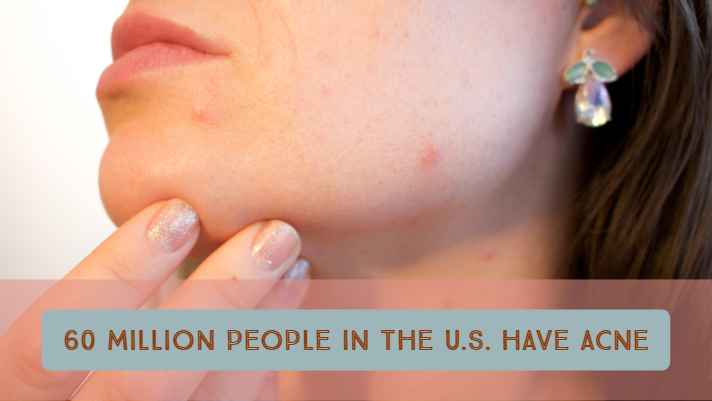
Zits on a Plane: How to Avoid the Post-Flight Breakout
“Airplane Acne” is even more frustrating than lost luggage. Luckily, there’s a way to fight back.
It’s a modern day horror story: the vacation you’ve been looking forward to for months is finally here. You’ve got your cute outfits planned and your beach body ready — but on the first day of your trip, you breakout. This isn’t just bad luck; it’s actually a phenomenon known as “airplane acne.” As it turns out, flying 35,000 feet in the air in a plane filled with dry, recycled air, bad food, and 100 fellow passengers is more stressful on your skin than it is on your nerves.
Understanding the root cause of airplane acne can stop breakouts before they start — and may even help you overcome your fear of flying!
Why Do I Break Out Post-Flight?
Everyone knows that recycled plane air spreads germs from passenger to passenger, but air is also the main culprit for airplane acne — more specifically, the dryness of the air. Humidity in a plane can drop to 20%, a whopping 45% lower than the average humidity in (admittedly rainy) London. Dry air means dry skin, which causes your glands to kick oil production into overdrive. This oil gets trapped under the dry top layer of skin, causing blackheads, inflammation, and ultimately, breakouts.
The other reasons for airplane acne are similar to the reasons people typically get breakouts: lack of sleep, stress, and bad food. However, there’s also a hormonal element that factors into your mile high breakouts. Long flights that cross time zones force our internal clock to reset itself, which is very stressful to the body. Our adrenal gland deals with this by producing cortisone, as well as secreting the male hormone androgen. This isn’t a problem for men, but since women have naturally low levels of androgen, this elevated production is enough to create a biological imbalance that leads to acne.
How Can I Avoid Travel-Induced Breakouts?
As with every other aspect of traveling, preparation is the easiest way to avoid a post-flight skin emergency. Here are some steps you can take before, during, and after your flight to keep airplane acne in the hangar:
1. Start Fresh: There isn’t anything you can do about your skin’s oil production, but you can keep oil from getting trapped under dead skin cells by exfoliating them away. Use a detergent-free cream cleanser or peel pads to clear your face before take-off, but do so gently to avoid redness and irritation.
2. Moisturize: Once you’ve scrubbed those pesky dry skin flakes away, adhere to your normal moisturizing regimen. This obviously helps prepare your skin for the ultra-dry environment, but it’ll also feel refreshing to gently massage your favorite cream into your skin after a revitalizing scrub — almost like you’re at the spa, rather than the airport bathroom.
3. Hydrate: Waiting for a flight attendant to come around with a tiny cup of water just isn’t going to cut it. Make sure you get a big bottle of water (or two) for the trip to keep your skin from drying out.
4. Keep It Moving: Get up every hour or so to stretch your legs. Of course, this is a good idea for your general health outside of skincare, but relieving stress from your body goes a long way toward maintaining healthy skin.
5. Apply Again: By now, you’ve gotten the hint that hydration is the name of the game. Apply moisturizer again midway through your flight to maintain your pre-flight complexion.
6. Finish Fresh: Now that you’ve landed, you’ll want to wash your face again with a gentle cleanser. Follow it up with your preferred skincare regimen; there are a variety of regenerating masks recommended for optimal skin treatment, but your usual moisturizing method should do the trick.
If you want a more personalized pre-flight plan, consult with a dermatologist to make sure you stay radiant and healthy all throughout your vacation.









No Comments
Sorry, the comment form is closed at this time.